Children are always the best audience. I couldn’t wait to come to school every day that the Traveling Art Exhibit was on display. Our PTA was once again, kind enough to purchase the exhibit for arts and education in order to acquaint children with Edgar Degas and Jackson Pollock.
Most people know how much the arts can impact creative thinking. Arts and education have a tremendously positive influence on children and their academic and social development.
The morning the kids saw the giant reproductions, they were in awe and realized that they can use their body to express themselves effectively just like Degas and Pollock did. My first grade class pretended to drip and splash paint like Pollock. Some of them wanted to see how long they could stand like Marie (Degas’ fourteen-year-old dancer) in fourth position. Every day that my third grade daughter would pass the Degas reproduction she would run and do a grand jeté as if she were going to jump into the scene.
Exposing children to the arts during a regular school week was a little like a vacation day from the every day norm.
Arts education is an essential component of a child’s curriculum…art inspires and children are most creative when inspired. Teachers and parents want their children to be exposed to art…especially when it has such a positive effect on their creativity and questioning.
Here are some questions, quotes and information about Edgar Degas and Jackson Pollock to inspire you and your children…
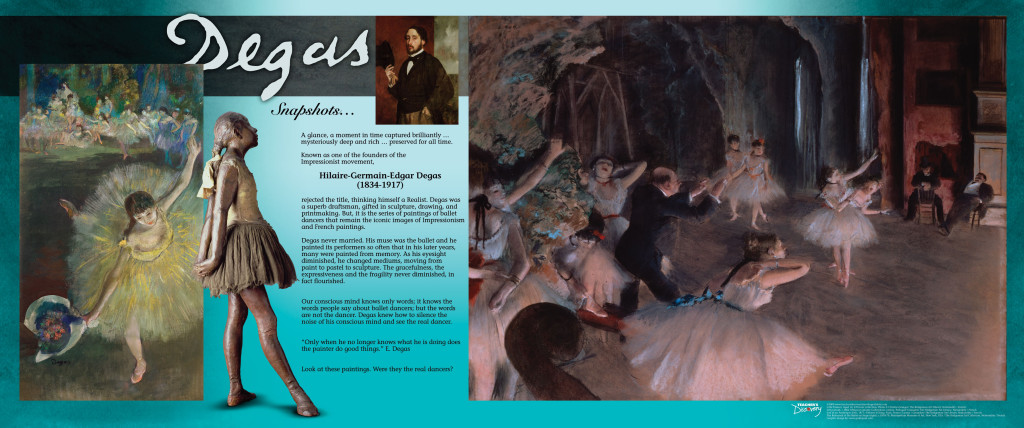
EDGAR DEGAS:
Degas was known as one of the founders of the Impressionist movement. He was gifted in sculpture, drawing, and printmaking. This series of paintings of ballet dancers remain the iconic images of Impressionism and French painting. Like many artists, Degas did not stop working as he grew older and his eyesight began to fail…he simply switched mediums and began working with pastels and sculpture.
Questions to ask children: Were these REAL dancers? How can you tell which ballerinas are dancing and which are not. Was Marie dancing or posing? What do you think Marie was thinking about when she was standing there?
Quotes to inspire children: “Only when he no longer knows what he is doing does the painter do good things.” “Painting is easy when you don’t know how, but very difficult when you do.”
Edgar Degas loved to be backstage capturing the dancers at the Paris Opera Ballet. The sculpture was of fourteen-year-old Marie van Goethem. She is the MOST famous ballerina in the world. Marie will forever be remembered in Degas’ iconic sculpture of the little dancer. The other dancers and horse riders were also real people. Degas preferred to capture the moments before the big moment…in rehearsals and backstage. A recent musical at the Kennedy Center will give the feeling of what it might have been like to be Marie and be Degas’ muse in Paris.
It probably took a really long time to make the little dancer sculpture. After a while she was probably just standing there waiting for Degas to finish. Probably she was just hoping not to move or mess up. She’s in fourth position, but it’s a relaxed fourth position. Her feet aren’t crossed over. And her weight is on her left foot. Your weight is supposed to be evenly distributed on both feet, so you don’t fall over. Judging from her outfit and her hairstyle, I don’t think she’s about to perform onstage; her hair is down, and she’s wearing a casual ballet outfit. Maybe she’s practicing or in the dressing room preparing herself.
My first graders enjoyed traveling to the Paris Opera House with Degas courtesy of the Philadelphia Museum of Art.
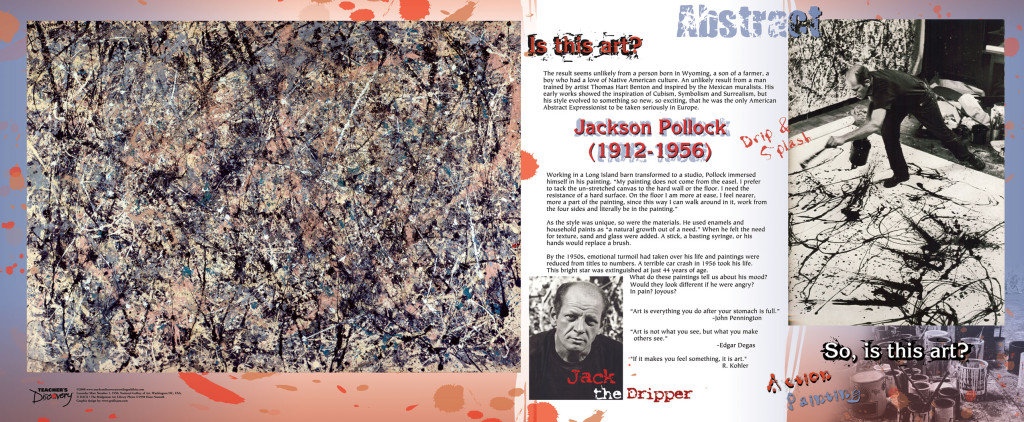
JACKSON POLLOCK:
The son of a farmer born in Wyoming who had a love of Native American culture, his early works showed the inspiration of Cubism, Symbolism and Surrealism. His style evolved to something so new and exciting that he was the only American Abstract Expressionist to be taken seriously in Europe.
Questions to ask children: Is this art? How can you communicate a feeling through art? How would you show: relaxed, happy, scared, angry, sleepy…What feeling do you think Jackson Pollock was having when he painted Lavender Mist?
Quotes to inspire children: “My painting does not come from the easel. I prefer to take the un-stretched canvas to the hard wall or the floor. I need the resistance of a hard surface. On the floor I am more at ease, I feel nearer, more a part of the painting, since this way I can walk around in it, work from the four sides and literally be in the painting.” “Every good painter paints what he is.”
Yes, of course this is art! As Jackson Pollock was becoming famous, many people argued whether his paintings were really art or just paint drips on canvas. Art makes you feel and Pollock’s paintings evoke strong feelings.
Watch this video from the MOMA about Pollock’s Lavender Mist and your children will also enjoy this cartoon “Art with Mati and Dada” about Pollock.
Related posts:
Mary Cassatt: 5 things you might not know
Caravaggio and his followers…with children



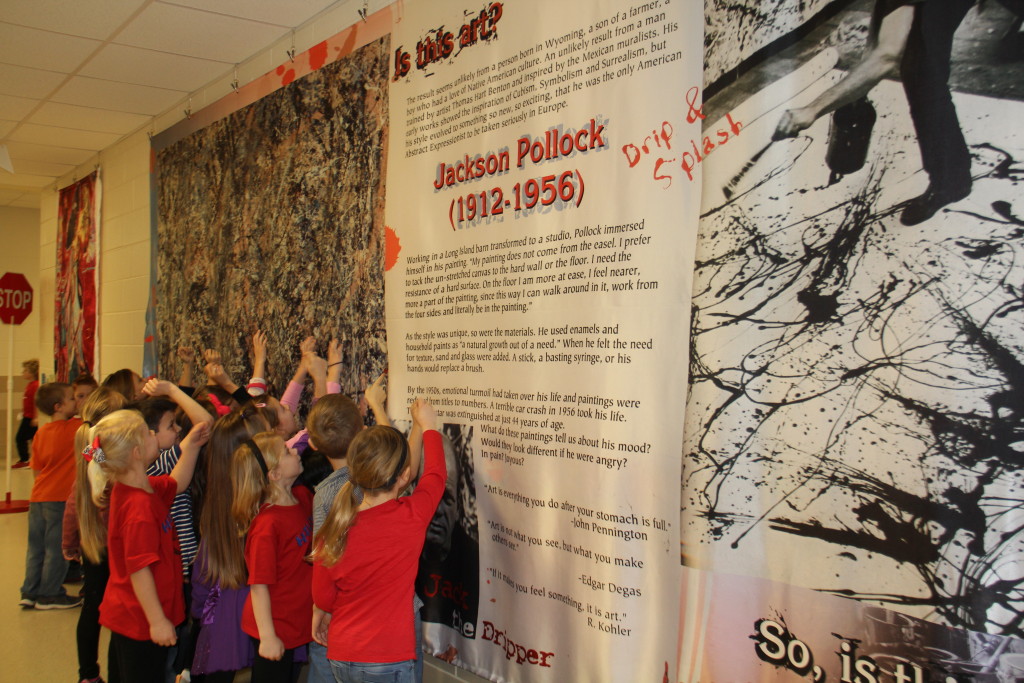
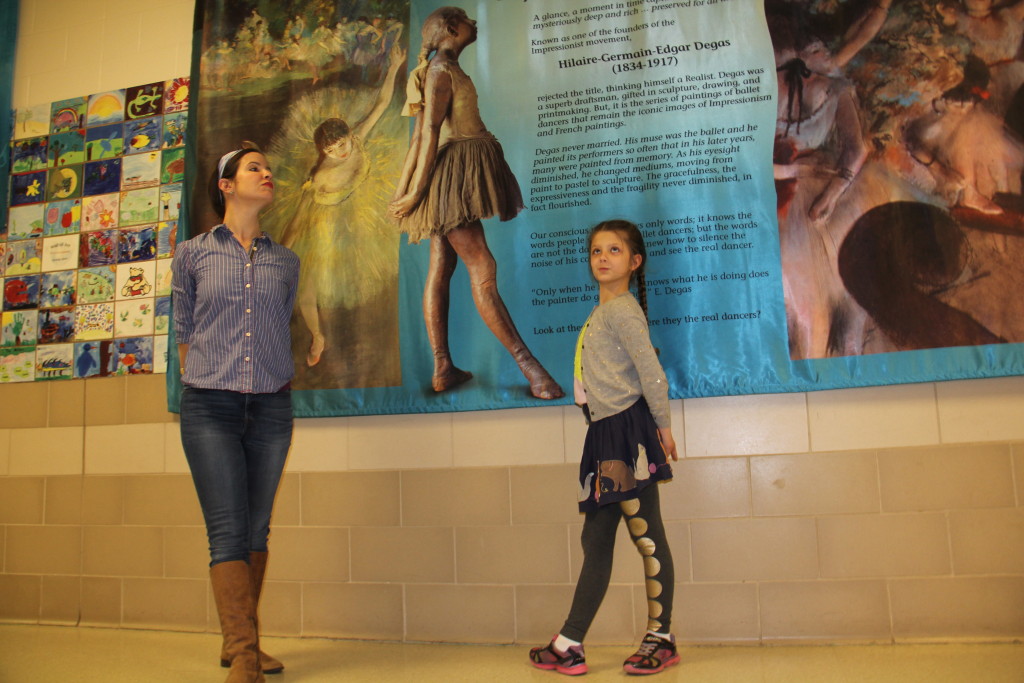
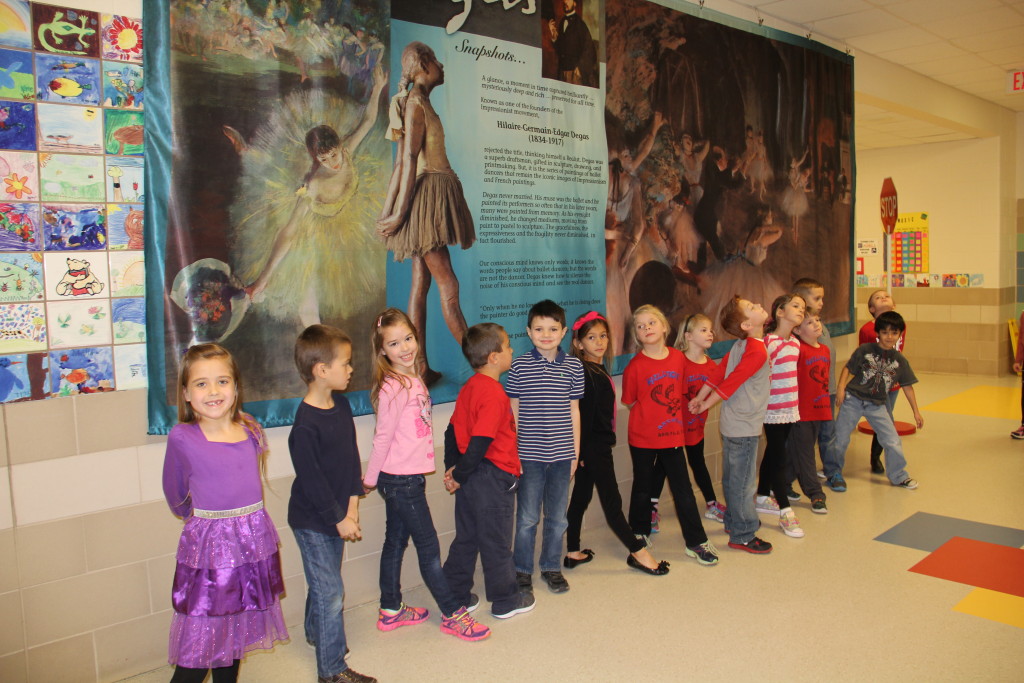
 Vail: Like Nothing on Earth
Vail: Like Nothing on Earth